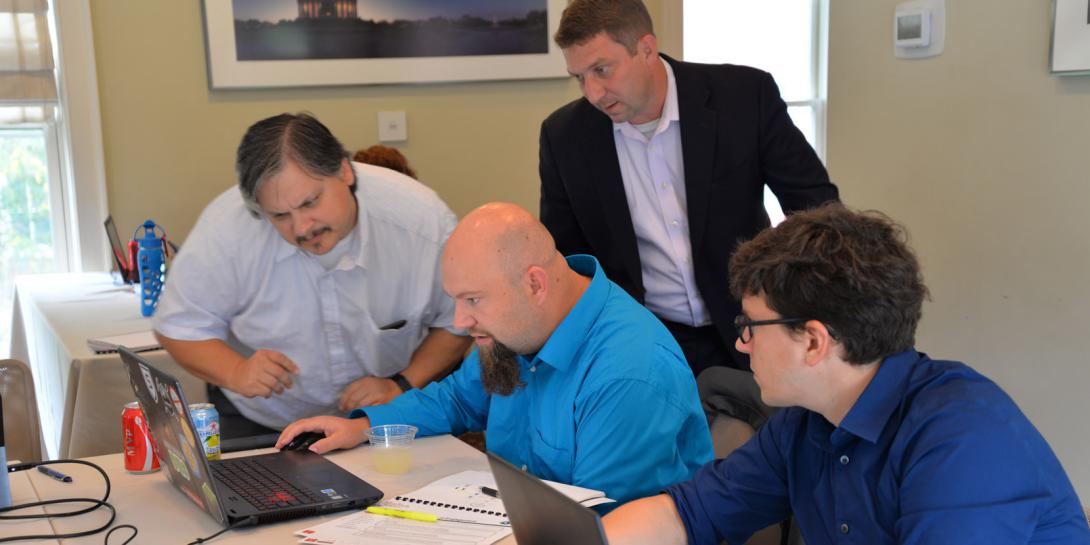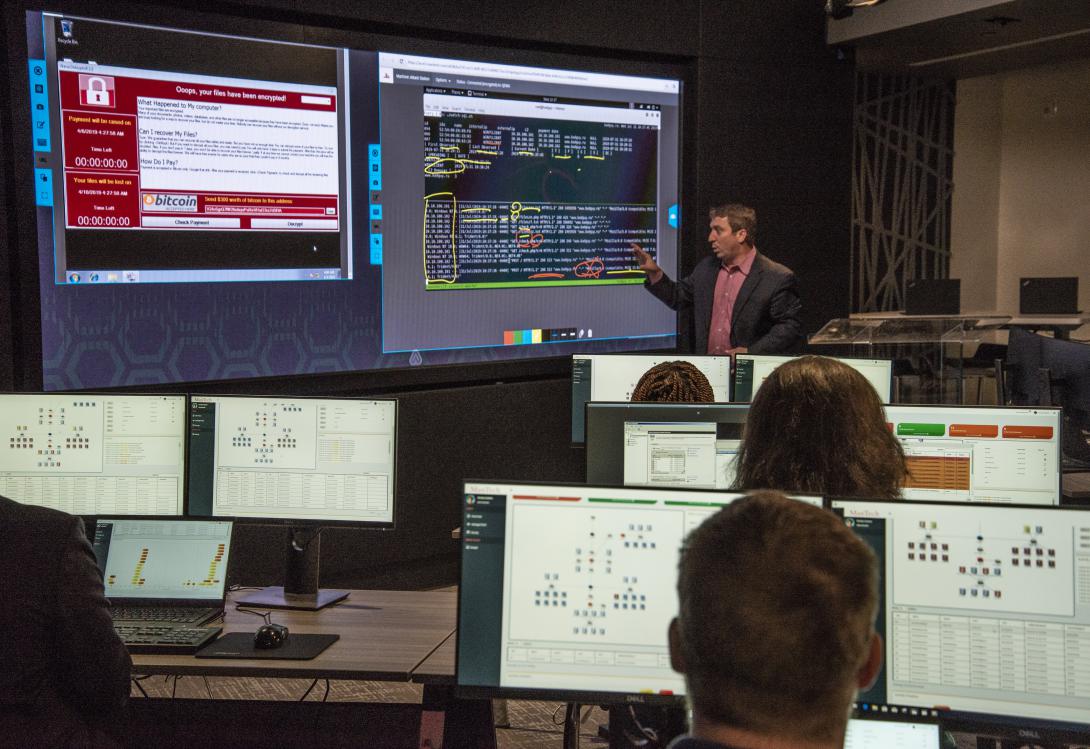Open Architecture Delivers Cybersecurity Advantages
The rapid pace of technology adoption has leveled the playing field in global competition and opened new warfare domains in the space and cyber realms. To maintain their competitive advantage, U.S. warfighters must find ways to simplify and streamline technology upgrades and fixes in the field, as well as develop processes to onboard new technology solutions faster. Open architecture and modular systems present compelling solutions to achieve this goal.
The U.S. Army began its move toward open architecture standards for command, control, communications, computers, intelligence, surveillance and reconnaissance (C4ISR) and electronic warfare (EW) capabilities more than a year ago, when the service laid the groundwork to revolutionize modernization efforts across the services. The adoption of the Army’s C4ISR/EW Modular Open Suite of Standards, or CMOSS, was meant to enable vehicle communication components to share a common platform while ensuring they conform to both Army and industry standards.
The advantages of such modular and open architecture standards are many, including communications interoperability; quick insertion of new capabilities; and speedy repairs when necessary. Consequently, individual components can be swapped out, whereas previously any singular failure could have required replacing entire platforms.
Rapid insertion on a platform of common standards also facilitates technology competition, enabling the best and most compatible technologies to rise to the top, resulting in adoption across multiple platforms. This approach largely eliminates vendor lock-in that can slow innovation.
On the heels of the Army’s embrace of open architecture in 2019, then-secretaries of the Navy, Army and Air Force signed a joint memo directing their respective service branches to develop a Modular Open Systems Approach, establishing common standards for future weapon systems acquisitions.
The key driver of this vital action has been ensuring the ability of the services to communicate with one another at machine speed. This capability is a fundamental stride the military deems essential to the multidomain operations and provides an advantage to warfighters at the tactical edge.
The open architecture approach and modular open suite of standards also are fundamental to the development and deployment of cybersecurity training initiatives throughout the U.S. Defense Department. Too often, cyber solutions and training are geared toward stopping yesterday’s attacks. With cyber attacks from foreign state actors increasing in both frequency and sophistication, all branches of the U.S. military need not only advanced cyber solutions but also an elite cadre of cyber warriors trained in the latest techniques so they can identify and mitigate any breaches quickly.
Beginning in 2014, a ManTech team helped design the U.S. Marine Corps Cyber Range and the Cyber Training and Evaluation Platform (CTEP).
Based on extensive research in offensive cyber tactics, cyber range experiences put cyber teams under live fire from actual malware and advanced offensive techniques. To ensure that U.S. cyber warriors are prepared for such cyber assaults in their own domains, these exercises take place on high-fidelity replications of the cyber teams’ own networks.
Simulating known malware attacks in real time helps trainees learn effective tactical responses to real-world cyber attacks. The exercises also help commanders identify top-performing and high-potential cyber operators, so they can be placed where they are needed most. In addition, military cyber operators are exposed to and coached through remediating network vulnerabilities using the latest in private sector cybersecurity techniques, which they can pass on to others in their unit.
Among the many benefits of the Marine Corps Cyber Range program is the ability to model and design protections for nontraditional networked assets such as supervisory control and data acquisition, or SCADA, systems, which are used for gathering and analyzing real-time data, a favorite target of malicious computer worms since the days of Stuxnet.
The team that developed the Marine Corps Cyber Range designed it with an open architecture to enable continuous advancement so new technologies could be integrated and old ones retired with minimum disruption.
Open architectures serve the Defense Department’s core objective of facilitating flexibility, scalability, speed and economy in adopting new technology solutions. For example, integrating vital proprietary cyber applications, such as mission planning, interfaces and training, require stiff licensing fees so they would otherwise be unavailable and inoperable.
Now, five years after CTEP’s inauguration, federal civilian agencies as well as the private sector use the open architecture originally developed for the Marine Corps. Critical infrastructure industries now employ this identical approach to safeguard against insidious cyber attacks that could shut down vital resources in a heartbeat.
One prime example is financial institutions ranging from local banks to global monetary powerhouses. Many now use cyber ranges to train their digital teams and, as importantly, discover and patch potential network vulnerabilities that might otherwise make them easy prey to cyber attackers. While financial institutions have a keen interest in reducing their own risk of a breach and quickly mitigating any damages, they also have an interest in helping reduce cyber risk across the global financial markets as a whole.
In 2019, the realm of cyber attacks continued to grow in sophistication and volume to the extent that it is now impossible for humans alone to keep pace. Consequently, the next evolution of open architecture standards for cybersecurity will integrate machine learning and other types of artificial intelligence.
The goal is to develop a machine learning and security orchestration platform that can contain adversaries on the network faster and do so at the scale and low latency the Defense Department requires. It would enable defensive cyber action at machine speed and be highly scalable.
For example, the systems of the future will be able to identify the most successful trainees in a cyber range exercise; single out behaviors and sequential efforts by cyber team members who succeed in identifying and stopping cyber threats; and implement systems to measure what works and can be optimized.
Crucially, systems built around recognized standards and open architectures will be able to most effectively evolve with the pace of technical innovation. Implications for the future training of cyber warfighters cannot be overstated. Rather than require classroom instruction by teams of trainers, U.S. warfighters will receive live, virtual and constructive training on their laptops wherever and whenever they deploy.
By adopting a modular and open architecture approach to cyber training, the U.S. military will be able to maintain and advance its competitive advantage in the cyber domain and ensure the security of critical networks into the future.
Tim Schaad is the executive director in ManTech’s Growth and Capabilities group, which is responsible for the company’s Advanced Cyber Range Environment (ACRE) and Cyber Range Services.
ManTech is the sponsor of AFCEA International’s Cyber Edge writing contest, which is open to thought leaders and subject matter experts in government, academia, industry and the military at all levels. Three authors will win monetary prizes and publication in SIGNAL Media. Top prize is $5,000; second prize is $2,000; and third prize is $1,000.
Submissions due February 3.







Comment
Nice.Recently cryptovirus
Nice.Recently cryptovirus attacked Albany airport and they paid ransome to get out of trouble according to news.is there anyway we can take care of this kind of situations.
Comments